Medical data extraction remains a significant hurdle, with the sector requiring 7.7x more administrative workers than other industries. Automating healthcare data extraction can help healthcare providers reduce operational spending and streamline their processes while improving patient care.
These systems capture and extract crucial information from a variety of medical documents—patient records, insurance forms, lab results, and more. The extracted data is processed and neatly organized into structured formats. The result? Doctors, nurses, and admins can quickly access critical patient data, leading to smarter decisions and a better patient experience.
This guide will help you quickly get up-to-speed with medical data extraction. We’ll show you how it’s transforming healthcare, its benefits, and practical steps to implement it in your practice.
Reduce patient wait times, amplify the workforce and improve efficiency across your healthcare ecosystem with automated document processing and workflows. Start your free trial today.
The current state of healthcare documentation
Healthcare documentation is the backbone of patient care, but it’s also become a monster that’s eating up valuable time and resources. Over 71% of clinicians report feeling overwhelmed by the sheer volume of information available.
By 2025, it’s estimated that the United States will need to hire an additional 2.3 million new frontline healthcare workers due to inefficient data extraction from medical documents. This staggering number highlights a critical issue in the industry.
In the current healthcare system, medical professionals spend countless hours sifting through patient records, insurance claims, and medical reports. This manual process is not only time-consuming but also prone to errors.
Here’s a breakdown of common document types that healthcare providers are likely grappling with:
- Electronic Health Records (EHRs)
- Electronic Medical Records (EMRs)
- Clinical notes and progress reports
- Lab and imaging results
- Insurance claims and billing information
- Regulatory compliance documents
Unstructured data, like handwritten notes, adds complexity to information management. Each document type may also require specific handling, storage, and retrieval processes. For healthcare administrators, managing this diverse ecosystem efficiently is crucial for maintaining smooth operations and ensuring quality patient care.
Relying on manual data entry and document processing may stress your entire healthcare organization. It can:
- Slow down patient care
- Increase the risk of errors
- Burden healthcare workers with administrative tasks
- Increase the risk of HIPAA violations and data breaches
Manual data extraction is not just time-consuming; it’s a minefield of potential errors. Consider this: 30% of patient charts are misplaced due to inefficient tagging and document archiving. Even more alarming, over 80% of all serious medical errors occur during care transitions, often due to miscommunication or missing information.
The need for a more efficient system is clear. An intelligent automation platform like Nanonets can transform this landscape. By automating just 36% of healthcare document processes, the industry could save up to $11 Billion in claims alone. That’s not just a cost-saving; it’s a revolution in efficiency and accuracy.
Simply put, it is the process of automatically pulling relevant information from various healthcare documents using advanced technologies.
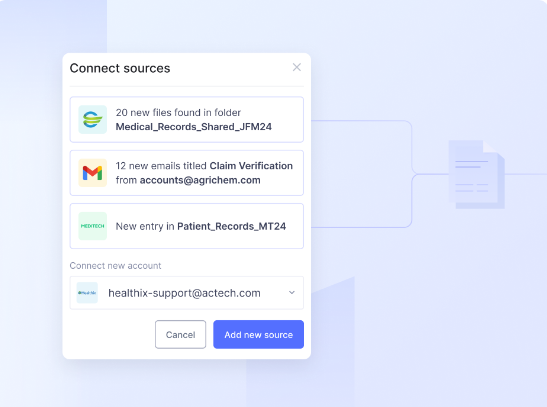
It involves:
- Identifying key information in documents
- Categorizing data into structured formats
- Integrating extracted data into existing systems
Medical data extraction relies on a combination of Optical Character Recognition (OCR), artificial intelligence (ai), Natural Language Processing (NLP), and workflow automation technologies to capture, extract, and process patient data with impressive accuracy and speed.
Let’s walk through a practical scenario that demonstrates how medical data extraction revolutionizes the entire healthcare experience. We’ll follow a patient, let’s call her Sarah, through her journey:
Pre-clinical visit
Without data extraction:
- Sarah calls to schedule an appointment, spending time on hold
- She arrives early to fill out paper forms, often repeating information
- Staff manually enter her details into the system, risking errors
With data extraction:
- Sarah books online by simply filling out a form
- The form data is automatically captured and integrated into the hospital’s EHR system
- The system extracts and validates her insurance information in advance
- Any missing information is flagged for follow-up before her visit
During the visit
Without data extraction:
- Sarah waits while the staff verifies her information and insurance
- The doctor spends time sifting through paper records or multiple digital systems
- Prescriptions are handwritten, risking misinterpretation
With data extraction:
- Sarah’s identity is quickly verified against extracted data
- The doctor accesses a comprehensive, up-to-date patient history instantly
- The doctor can quickly create prescriptions digitally and automatically added to the hospital’s EHR system
Post-clinic visit
Without data extraction:
- Billing staff manually process insurance claims
- Sarah receives a paper bill weeks later, unsure of the breakdown
With data extraction:
- Insurance claims are automatically generated and submitted
- Sarah receives a digital invoice promptly, with a clear breakdown of charges
- Follow-up appointments are scheduled with automated reminders sent
The impact
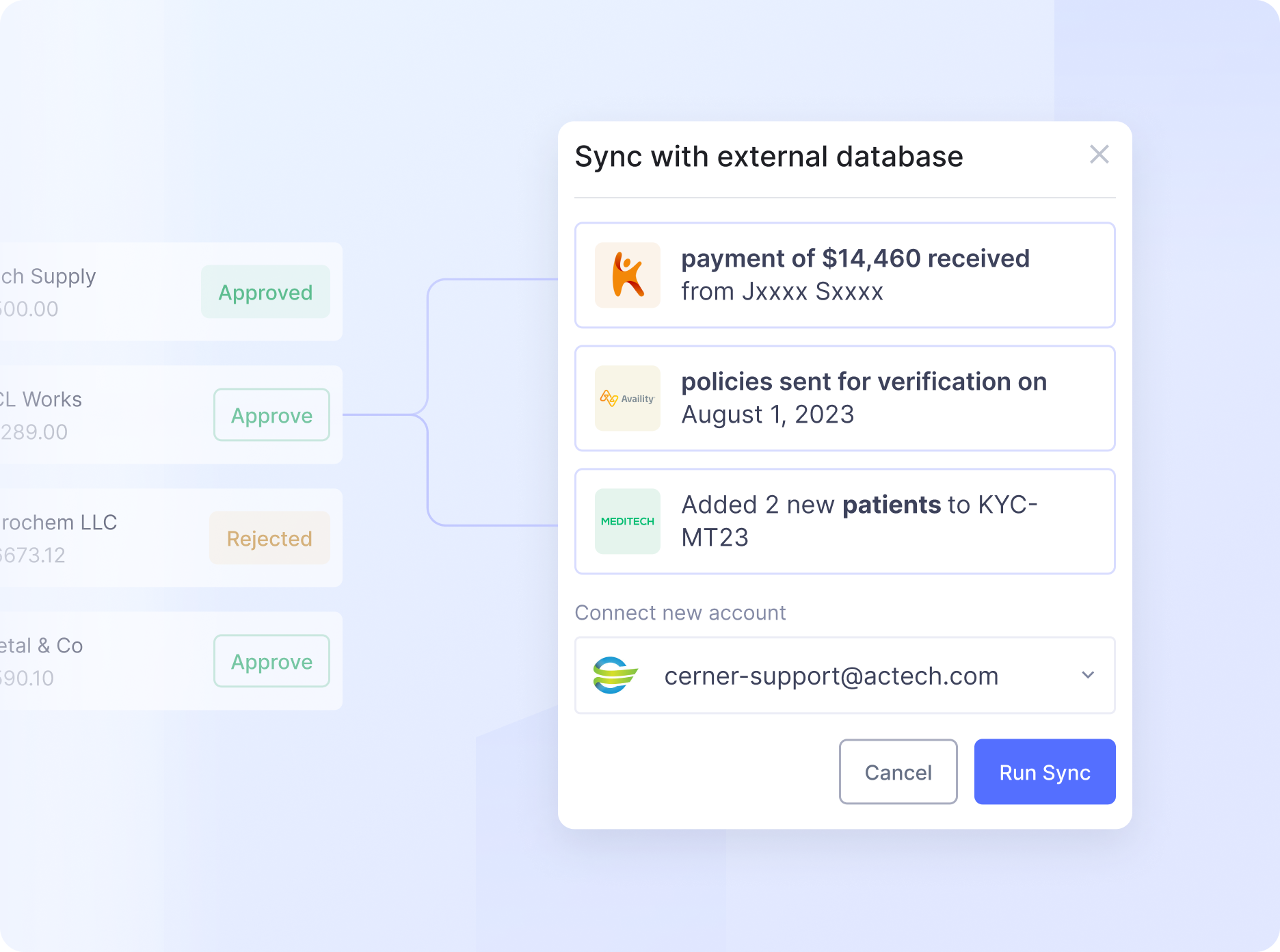
For patients like Sarah, medical data extraction reduces repetitive paperwork and lengthy wait times. Online scheduling, swift check-ins, and doctors who are instantly up-to-speed on her health history make each visit efficient and effective. Clear digital invoices and automated reminders also keep Sarah informed without the hassle. Insurance claims would be processed faster, reducing reimbursement delays.
For healthcare providers, it offers a range of benefits. Because of the seamless data flow between systems, admin staff can reduce manual data entry and tedious copypasting. Claim forms are automatically populated, reducing errors and speeding up reimbursement.
Doctors and nurses will have access to comprehensive patient histories, and test results all in one place. They won’t have to waste time deciphering handwritten notes or sifting through multiple systems. This streamlined access to information allows for better decision-making and patient care. Cash flow improves as billing becomes more efficient and accurate.
Overall, medical data extraction tools significantly enhance operational efficiency, reduce errors, and improve patient care.
Not all automation tools are created equal. Some may struggle with complex medical terminology or handwritten notes. Others may not integrate seamlessly with existing healthcare systems.
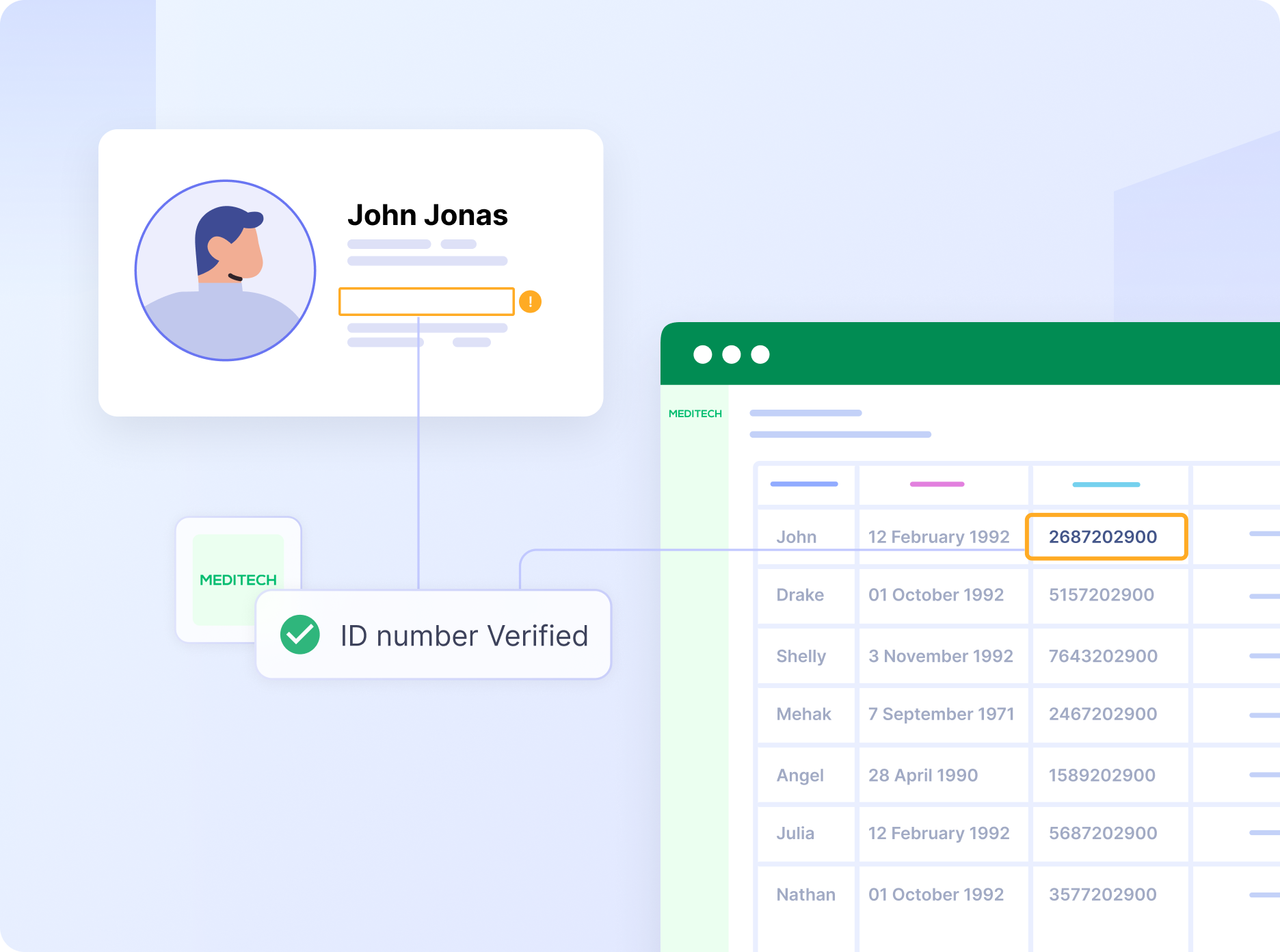
You need to consider these challenges when selecting a data extraction tool for healthcare:
1. Dealing with inconsistent data formats
Healthcare data comes in countless formats, from different EHR systems to various imaging standards. Your extraction solution needs to make sense of it all. For instance, how do you ensure that a blood pressure reading from one system is interpreted the same way as in another? Your tool should be able to map diverse data formats to a common standard, ensuring consistency across the board.
2. Ensuring patient data privacy and security
HIPAA compliance aside, you must ensure that every step of the extraction process, from capture to storage, adheres to strict privacy standards. It is crucial to retaining your patients’ trust and your organization’s reputation. Healthcare data is sensitive, and your automation tool must prioritize its security.
3. Integrating with existing healthcare systems
Your data extraction solution needs to work seamlessly with various EHR and EMR systems, laboratory information systems, and other critical healthcare software. This integration should allow for real-time data sharing and updates across platforms. This should help the healthcare providers get a complete picture of a patient’s health status.
4. Handling unstructured data
Much of healthcare data is unstructured, including physician notes, patient narratives, and imaging reports. Your extraction tool must be capable of parsing this information effectively, extracting relevant details, and organizing them in a structured format. This requires advanced natural language processing capabilities and machine learning algorithms to accurately interpret and categorize diverse medical terminology, different languages, and currencies.
5. Maintaining accuracy and quality control
Given the critical nature of healthcare data, even small errors can have significant consequences. Your extraction tool must have robust quality control measures in place. This includes validation checks, error detection algorithms, and having a human in the loop where necessary. Regular audits and continuous improvement processes are essential to ensure the tool’s accuracy and reliability over time.
Implement a comprehensive strategy to tackle these challenges head-on. Start by selecting a tool that can handle diverse formats and unstructured data, ensuring it integrates with your existing systems and prioritizes security. Set up quality control measures and regular audits to maintain accuracy. These steps lay the foundation for efficient data management.
Next, focus on your team and processes. Train your staff thoroughly on the new system and establish clear protocols for data handling. Continuously monitor and improve the extraction process, adapting to new challenges as they arise. This holistic approach ensures that your organization can effectively leverage data to improve patient care and streamline operations.
Nanonets is an ai-based OCR software. A HIPAA-certified, GDPR and SOC-2-compliant platform perfect for healthcare document management. You can extract text from your medical documents, process data, sync data into different systems, process invoices, and more.
Here’s how Nanonets can automate data extraction from medical documents.
1. Medical document collection
You can automatically collect documents from email, DropBox, Zapier, and more. This way, you’ll automatically ingest medical documents into the system. You can also classify incoming documents using ai (e.g., prescriptions, lab reports, insurance claims).
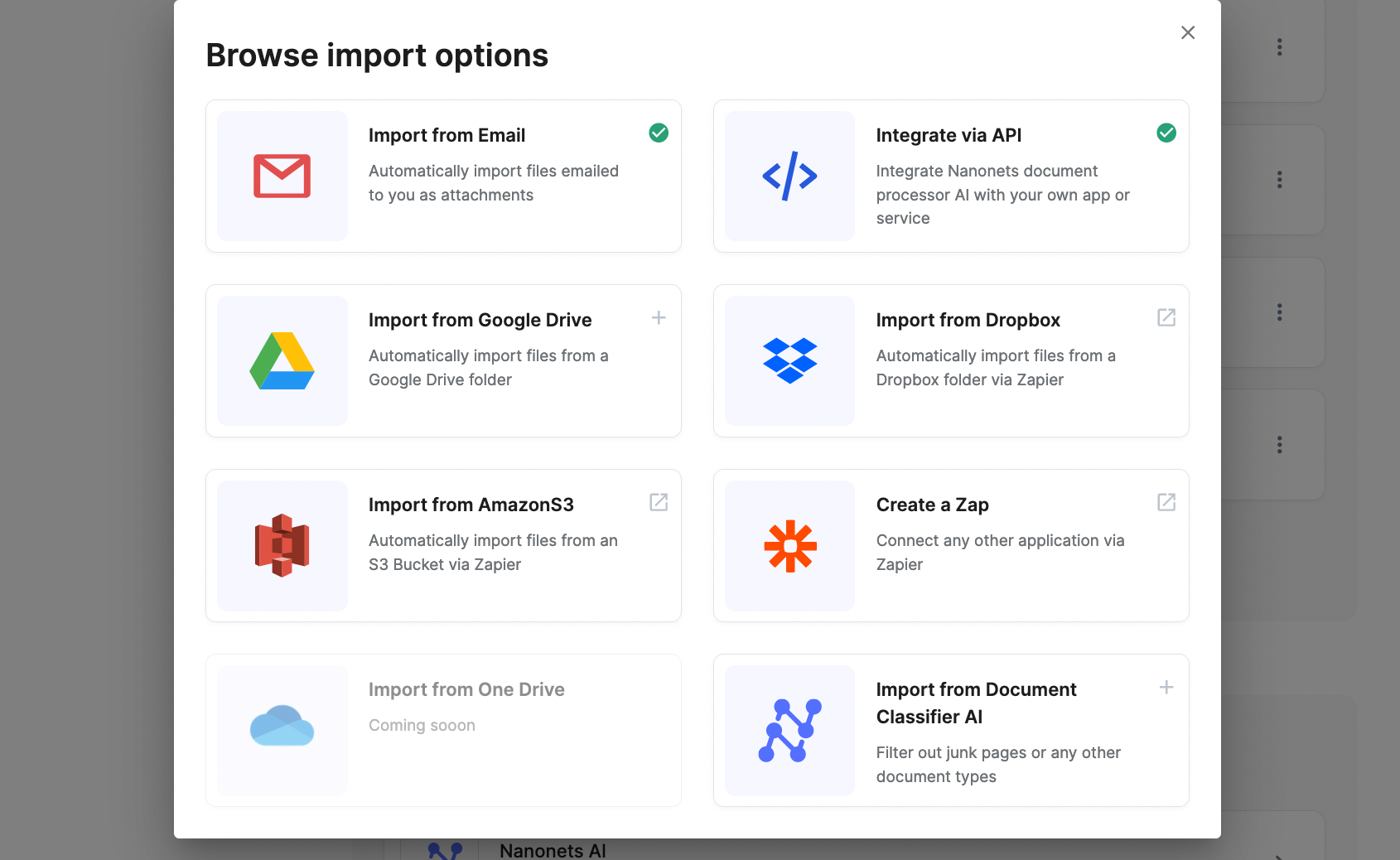
2. Data extraction and processing
Utilize pre-trained OCR models for standard documents like invoices or ID cards, or create custom models for specialized medical forms in as little as 15 minutes. These models can process multi-page documents, lengthy tables, and various EHR/EMR formats with ease.
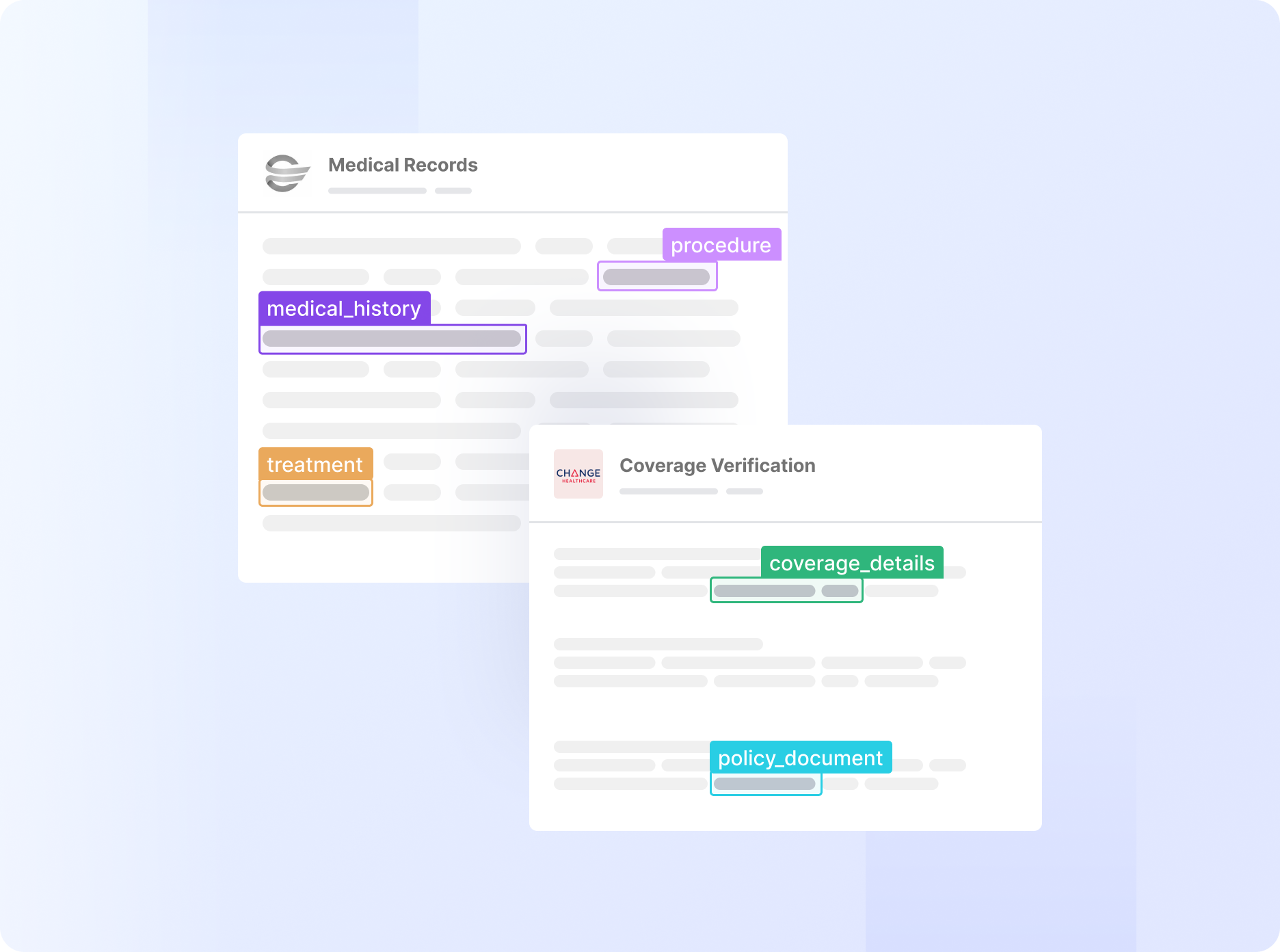
After data extraction, you can set up automated rules to perform data formatting, such as text capitalization, date formatting, and more. You can also set up database matching to verify extracted against existing patient records or insurance databases.
3. Data validation and syncing
The validation workflow enables you to detect and flag duplicate documents to prevent issues like double billing. You can also create multi-stage review processes for critical documents, assigning different team members as needed.
Once data is extracted and approved, update it in your systems, such as ERP, CRM, or EHR. To do this, you can simply set up the relevant data export rules.
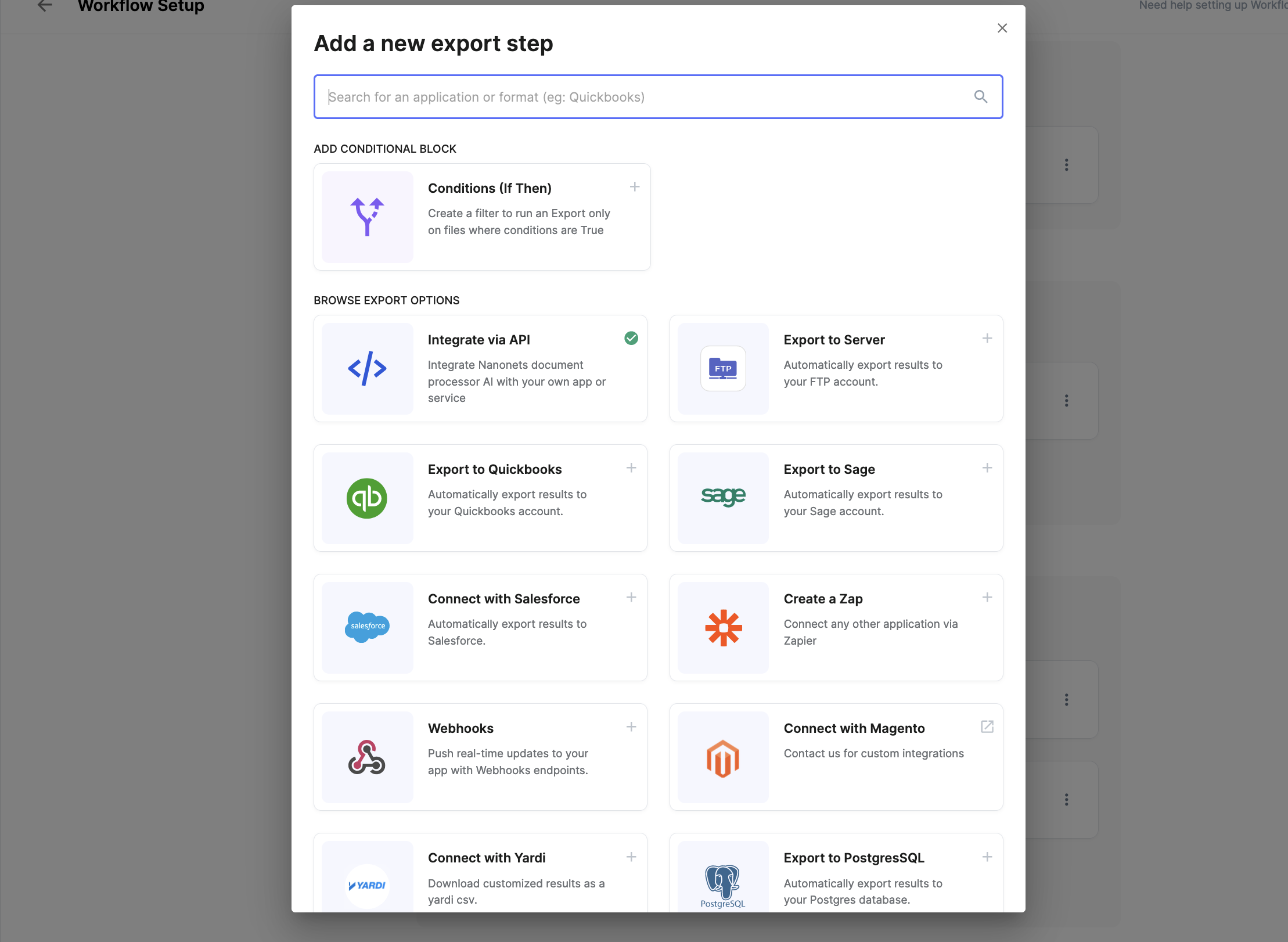
You can also download the structured outputs (CSV, JSON, XML) for further analysis or use webhooks or Zapier to push the data to other systems in real time.
4. Document archiving
Convert your medical documents into searchable PDFs and save them in a digital drive. You can then securely access the documents anytime by just searching for related keywords.
Nanonets can be used to extract data from:
- Medical Documents
- Health insurance plans
- Invoices
- Claims
- Patient Surveys
- Authorization Forms
- Doctor Letters
- Prescriptions
- ID Cards
And more.
Are you solving any healthcare document processing issue? We would love to help you out. Schedule a call so our experts can understand your use case and create automated workflows for you.
Nanonets is a highly flexible platform – we can tailor the solution to meet your specific needs. Contact us to discuss your unique requirements and explore how our ai-powered document processing can streamline your healthcare operations.
Here’s why Nanonets is a great choice for healthcare document automation:
- Eliminate manual data entry: Automate data extraction from any type of medical document (patient slips, invoices, receipts, patient surveys, and more), to reduce errors and improve efficiency.
- Enhance patient experience: Reduce wait times by streamlining patient onboarding, claims processing, and Medicare compliance checks.
- Expedite claims processing: Quickly verify and approve claims by automatically extracting and cross-referencing patient data from various sources.
- Ensure compliance: Maintain HIPAA, GDPR, and SOC2 compliance with secure data handling and processing.
- Flexible and customizable: Easily implement new features or customize processes to meet specific healthcare workflow needs.
- User-friendly interface: Intuitive drag-and-drop interface requires minimal training, even for non-technical staff.
- Comprehensive integration: Connect seamlessly with existing healthcare IT infrastructure through robust APIs and pre-built integrations.
- Multilingual support: Process documents in multiple languages, catering to diverse patient populations.
- Audit trail and version control: Maintain detailed logs for compliance and track document changes over time.
Conclusion
Extracting data from medical documents and digitizing healthcare is the next obvious step to providing great healthcare experiences and low cost by reducing manual document processing costs. Using platforms like Nanonets, you can quickly extract data from PDFs, forms, and scanned documents and combine patient data for efficient healthcare outcomes. If you need custom workflows, you can schedule a call with our team easily.
FAQs
Pulling specific data from Electronic Medical Records. Example: Extracting all diabetic patients’ A1C levels from the lab results section for the past year to identify those needing intervention.
What is the healthcare documentation process?
Recording patient information in EMRs or paper charts during care. Includes doctors noting diagnoses, nurses updating vital signs, and staff entering billing data after each patient interaction.
What is medical record processing?
Organizing patient data in healthcare systems. Involves scanning paper documents, inputting data into EMRs, coding diagnoses for billing, and ensuring record completeness and accuracy.
What are five major purposes of medical documentation?
(1) Patient care continuity (2) Legal protection (3) Quality assurance (4) Billing accuracy (5) Research and epidemiology
What is medical extraction?
Automated process of pulling relevant data from healthcare documents using ai and OCR. Example: Extracting medication lists from discharge summaries.
What is EMR data extraction?
Retrieving specific patient information from Electronic Medical Record systems for analysis or integration with other healthcare systems.
What is an extract in healthcare?
A subset of patient data pulled from a larger healthcare database or system for specific purposes such as analysis, reporting, or transfer.






